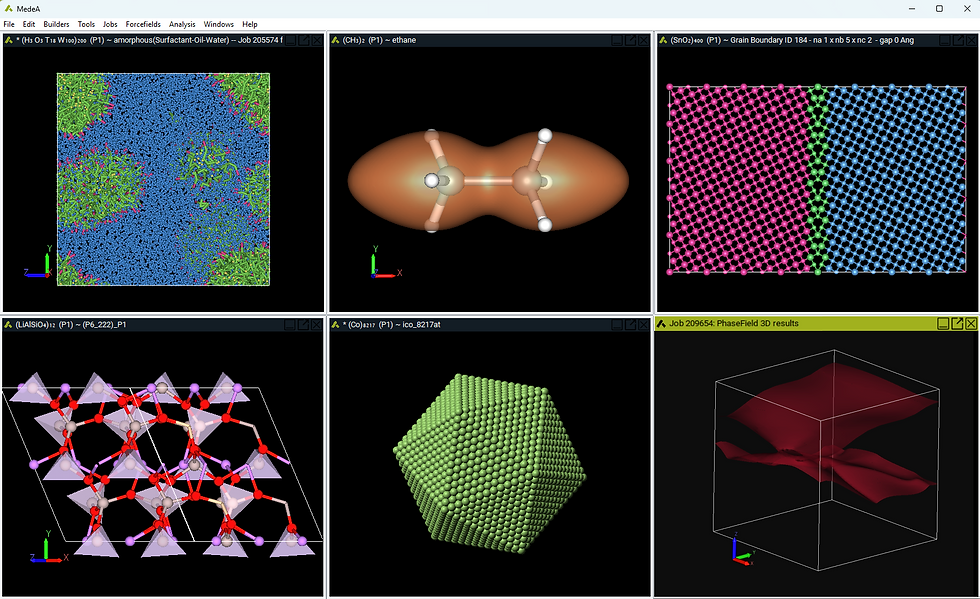MedeA in Publication: Volumetric and Energetic Properties of Polystyrene and Polyethylene...
- Katherine Hollingsworth
- Apr 26, 2023
- 1 min read

Volumetric and Energetic Properties of Polystyrene and Polyethylene Oxide Affected by Thermal Cycling
B Minisini; A Soldera (Materials Design, Sherbrooke University)
Macromolecular Theory and Simulations – Published 06 April 2023
Abstract
Polymers are known to exhibit hysteresis in their thermal and volumetric properties between cooling and heating at the glass transition. A thorough investigation of this hysteresis using atomistic simulation is not proposed until now. In this work, therefore, the glass transition is studied through heating and cooling protocols at constant rate for two polymers, polystyrene (PS) and polyethylene oxide (PEO), with different molecular weights. To achieve this objective, the analysis is carried out by plotting against temperature, specific volume, coefficient of thermal expansion, total energy, and constant volume heat capacity. The calculated properties for PS and PEO are found to be in good agreement with experimental data, confirming the accuracy of the TraPPE force field for these polymers. The glass transition temperature (Tg) range remains the same regardless of the properties. Moreover, the difference in properties between heating and cooling processes systematically leads to a peak at the same temperature, associated with Tg. Finally, starting from a low temperature, the polymer chains remain mainly in a potential well as the temperature rises, while during cooling the exploration of the configuration space continues up to the temperature where no torsional changes are observed.



Comments